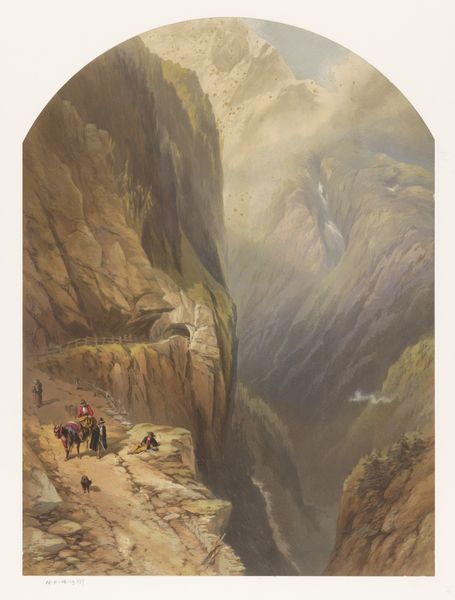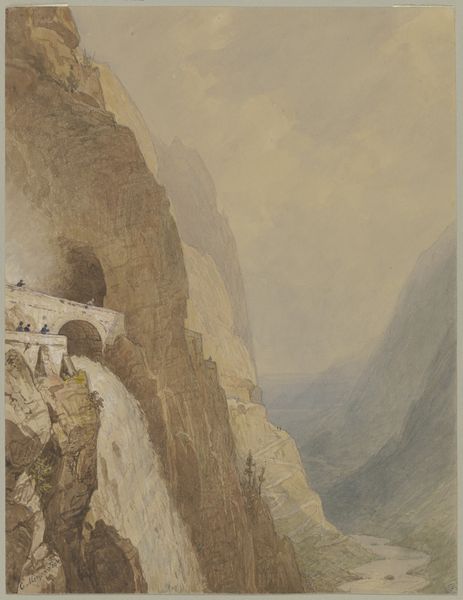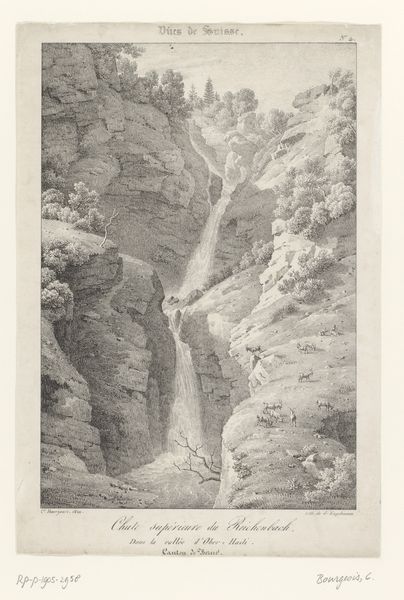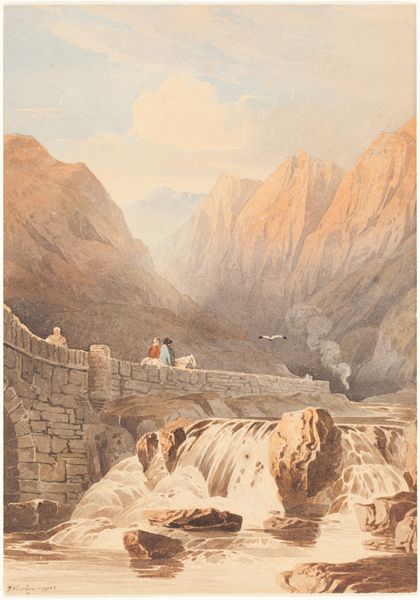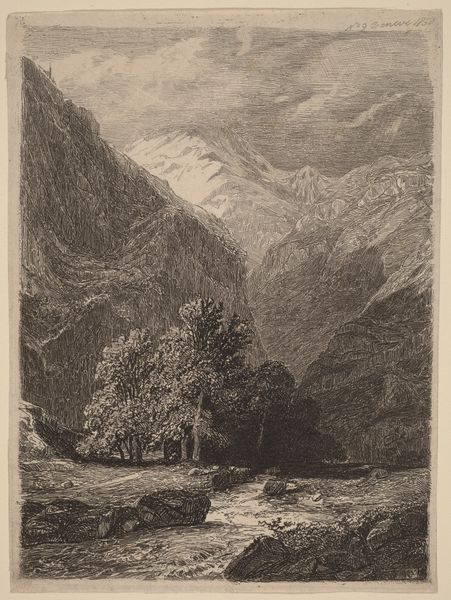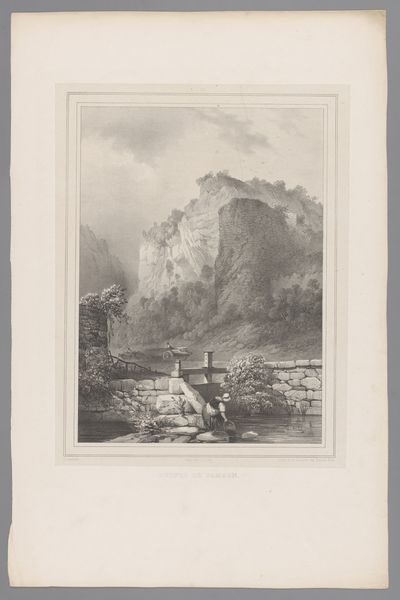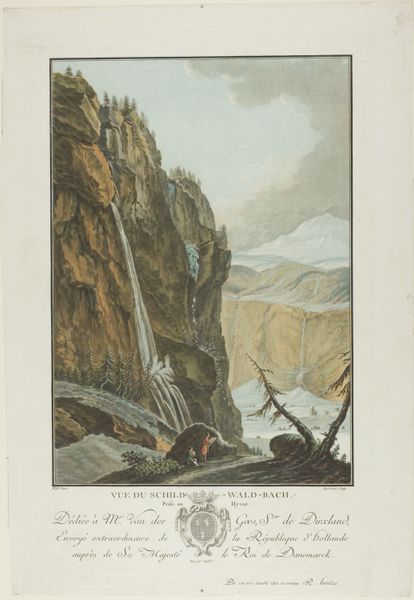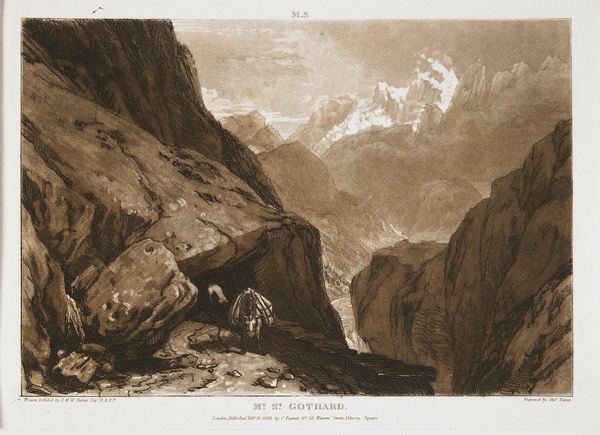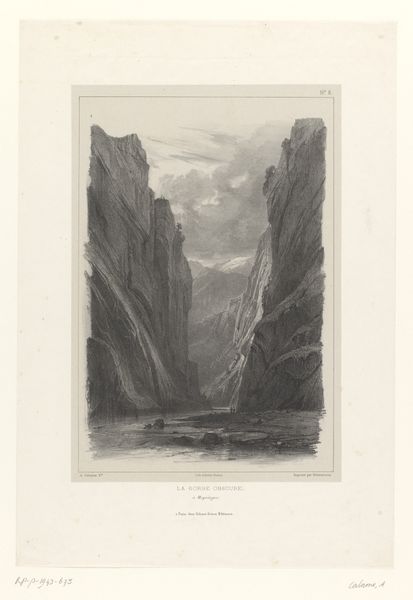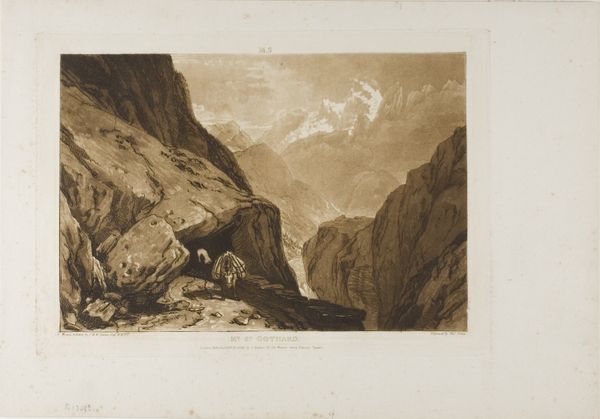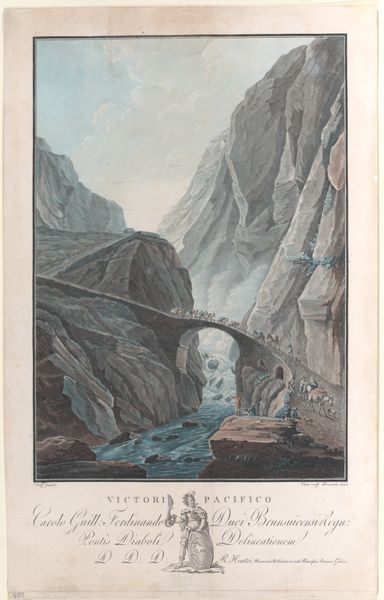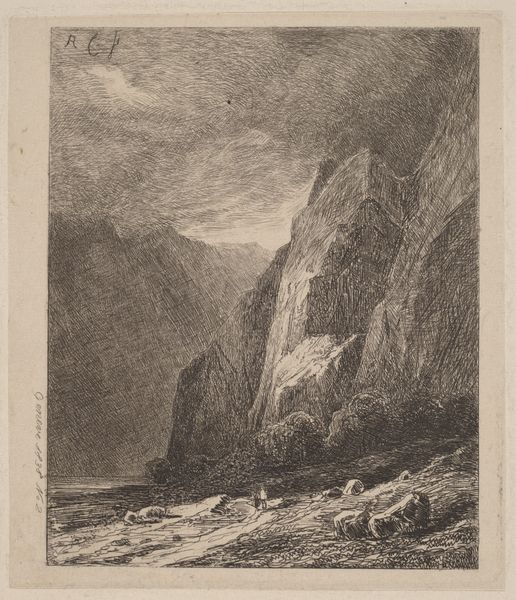
Dimensions: height 445 mm, width 326 mm
Copyright: Rijks Museum: Open Domain
Johannes Hilverdink created this watercolor called "Berglandschap" which translates to "Mountain Landscape", though the exact date is unknown. The image shows two men, possibly explorers or surveyors, navigating a steep, rocky terrain. The romantic portrayal of nature in the 19th century coincided with increased travel and exploration. As the Netherlands, the country in which this was made, began to expand its colonial reach, images of distant lands became increasingly important. This image presents a view of nature not as a resource, but as a sublime, even daunting force, and these kinds of visual codes spoke to cultural ideas about adventure and discovery. It also implies a certain kind of masculine identity associated with facing challenges. To truly understand this artwork, one can delve into travel literature and colonial histories of the period. What does this landscape reveal about the Dutch view of the world during this time? Remember, the meaning of art is always intertwined with its social and institutional context.
Comments
No comments
Be the first to comment and join the conversation on the ultimate creative platform.
